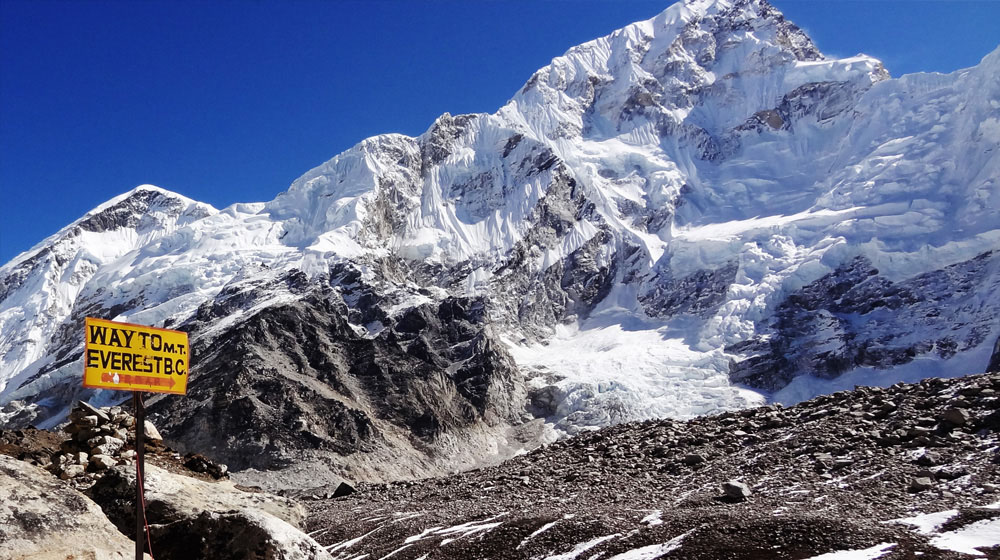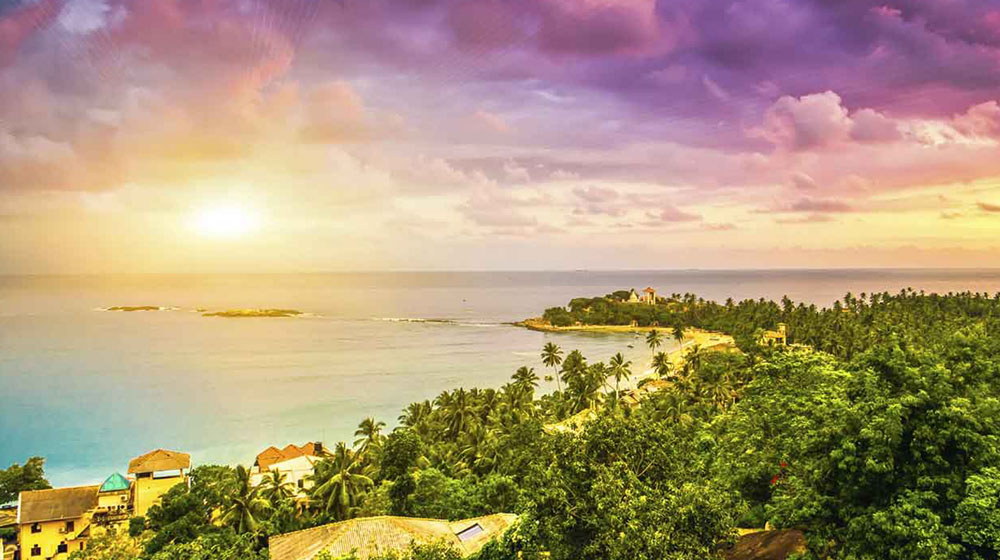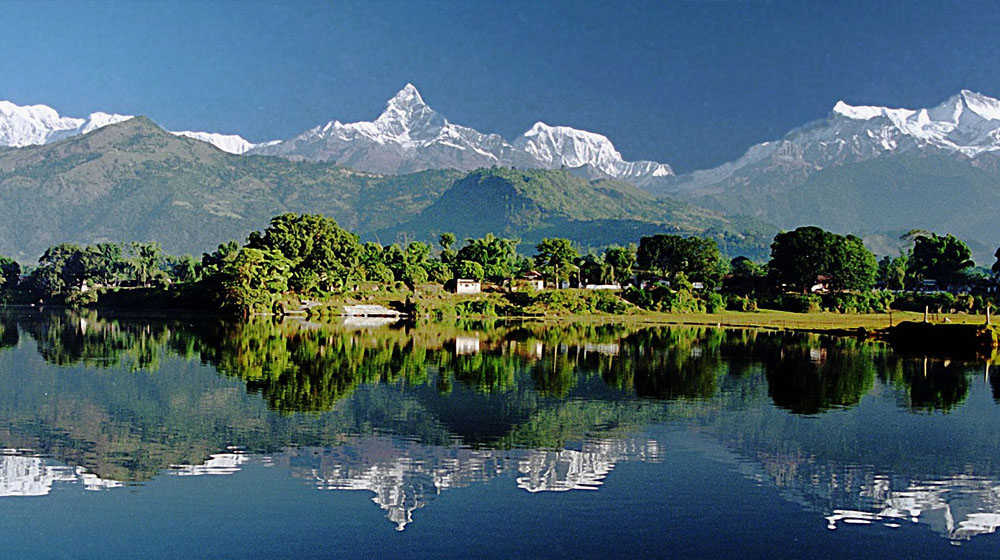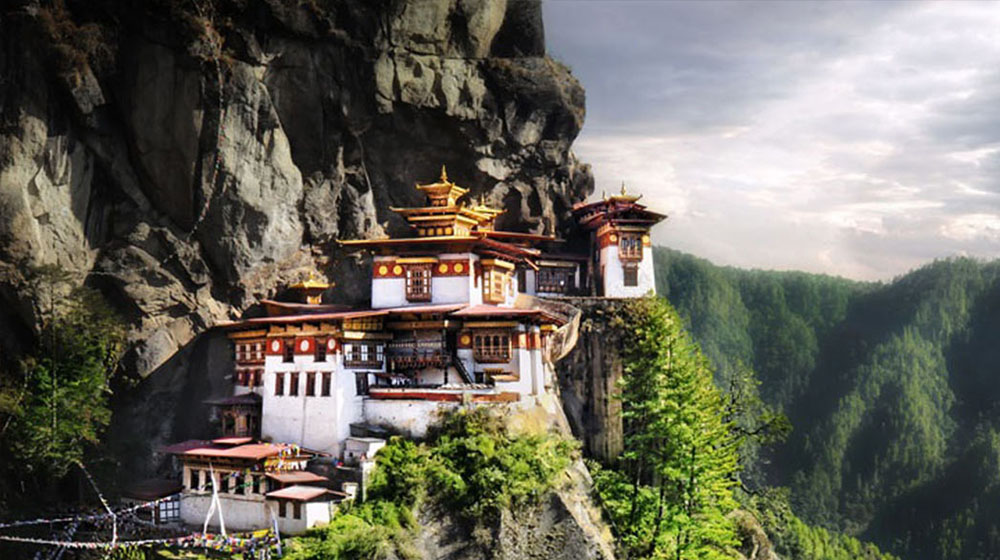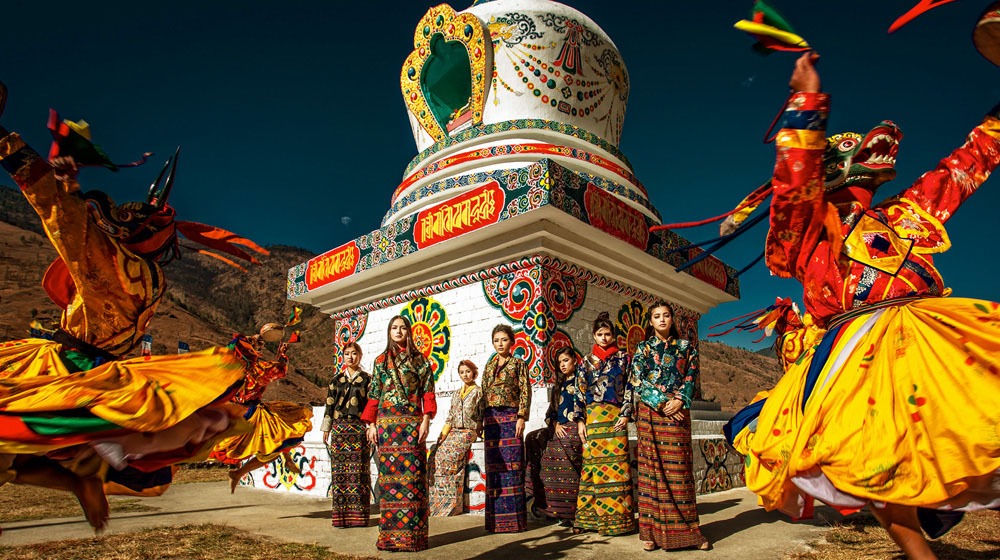Overview
A classic trek with stunning mountain scenery of Lhotse, Nuptse, Ama Dablam, Kang Tega, Thamserku, Pumori, Mount Makalu, Taboche, Cholatse and the one highest of them all.
On Everest Base Camp Trek-19 days we experience astounding mountain views, get glimpses of the life of the world famous mountain climbers (the Sherpas), enter Sagarmatha National Park, a world heritage site and tour high altitude Buddhist monasteries. Trekking to the Everest Base Camp of Nepal also provides us an opportunity to embark on an epic journey that Sir Edmund Hillary and Tenzing Norgay set off to in 1953. Our Sherpa will guide us to the base camp of the world’s tallest mountain, Everest on an adventurous trek package that also includes climbing Kalapathhar to admire the panoramic views of Everest and other Himalayas. Nothing beats the thrill and sense of accomplishment that grips hikers on seeing the power and grace of the mighty mountain up close.
Everest Base Camp trek is designed with plenty of time for the necessary acclimatisation. The route takes us to the prettiest Sherpa villages in the Khumbu and to Namche Bazaar the colourful and vibrant heart of Sherpa country. We get the opportunity to visit the main monasteries of the Khumbu region at Tengboche and Thame. The high points of our itinerary are the walk up to Kala Patar for the panoramic viewpoint of Everest, Lhotse and Nuptse and also the hike from Gorak Shep along the Khumbu glacier to Everest Base Camp.
Day 1 Arrive Kathmandu (1,400m)
Flying into Kathmandu along the northern border of Nepal on a clear day is in itself an unforgettable experience, with the entire Nepalese Himalaya sprawling out below you. After customs, you will pass out of the restricted area and into the passenger pick-up area outside the building. You will see a Mountain Company signboard and our representative will be waiting to welcome you to Nepal. After transferring to your hotel, you will be given a chance to catch your breath and then be given a full briefing. The rest of the day will be yours to explore and to shop for any items that you require. Today you will hear the Nepalese word for hello ‘Namaste’, you will probably never forget that word after this trek.
Day 2 Sightseeing in Kathmandu
This is a day to explore Kathmandu where we organise guided sightseeing to the Buddhist and Hindu sights in Kathmandu, to Kathmandu’s Durbar Square, Swayambunath – the Buddhist monkey temple and Pashupatinath – a sacred Hindu temple complex on the banks of the Bagmati River. Three major towns are located in the valley, Kathmandu, Patan and Bhaktapur, each having a great artistic and architectural tradition. Kathmandu is the capital and the largest city in the country. Patan, the second largest is separated from Kathmandu by a river. Bhaktapur, the third largest, is towards the eastern end of the valley and its relative isolation is reflected in its slower pace and more distinctly mediaeval atmosphere. In the Kathmandu Valley the landscape is dramatically sculpted by the contours of the paddy fields. The towns and villages are alive with the colours of farm produce, ranging from pyramids of golden grain to the vivid reds of chilli peppers laid out on mats to dry in the sun. In the streets and towns there is a constant bustle of activity, especially in the bazaars and markets where the farmers sell their vegetables and fruit. You should get back to the hotel after your sightseeing tour around mid- afternoon and the rest of the day is free for you to explore the city further and pack bags ready for the start of the trek the following morning. You can leave a bag at the hotel with items you will not need on the trek.
Day 3 Fly to Lukla (2,840m), trek to Phakding (2,610m)- 4 to 5 hours walking
Our morning flight by Twin Otter aircraft takes us to Lukla, the most renowned mountain airstrip in the world. Originally conceived by Sir Edmund Hillary’s Himalayan Trust, Lukla is now one of the busiest runways in Nepal. On the flight we watch the rugged foothills give way to the snowline of the Himalaya; many of the world’s highest mountains, including Cho Oyu (8,153m), Lhotse (8,516m), Gauri Shankar (7,145m), Menlungtse (7,181m) and of course Mount Everest may sometimes be seen from the window of the plane. After an exciting landing at Lukla and a warm welcome you will meet your porters that will carry your luggage every day until you return to Lukla. Make sure you make time to get to know them and to acknowledge them even if it is through smiles and hand signs. After a cup of tea in Lukla giving the porters a chance to load up we then depart Lukla on the typically stony path that descends from the forested terraces of Lukla which takes us right into the Dudh Kosi (river of milk) valley. Along the way the trail offers tantalising views and you will pass large stones carved and painted with prayers, carved mani stones and prayer wheels which are typical of Sherpa Buddhist country. Buddhists hold these sacred and you must as a sign of respect, pass these in a clockwise direction. After passing through the small hamlets of Chaurikharka and Ghat we arrive at the small hamlet of Phadking which is situated right next to the Dudh Kosi river. The trail from Lukla to Phadking is moderately easy walking and follows undulating terrain. Memories of the first day will include the sounds of porters, a cacophony of different languages, and strange sounding birds, the sights of porters with loads resting on sticks outside tea houses, tired trekkers on their way back to Lukla, prayer flags, the gaudy colours of the tea houses and of course the dramatic scenery.
Day 4 Trek to Namche Bazaar (3,445m)- 7 hours walking
Today we trek into the Sherpa capital and heart of the Khumbu .You will now be becoming familiar with the local protocol for passing chortens, mani stones, yaks and spinning prayer wheels and enjoying the hustle and bustle of trekking and everyday life that exists in the Khumbu. Walking up the hill to Namche will be one of the harder days of the trek but we take it slowly. Walking slowly at altitude is the key to acclimatize so this will become the norm for the trek. From Phakding its about 2 or 3 hours walk to Monjo, the trail follows the Dudh Kosi valley north, staying on its west bank and soon there is a good view of Thamserku (6,608m). After a walk uphill and over a ridge there is a traverse high above the river to Benkar, and a little further on you cross over a suspension bridge to the east bank of the Dudh Kosi to reach the small hamlet of Monjo at the entrance to the Sagarmatha (Everest) National Park. As you enter into Everest National Park area entry formalities have to be completed. We then follow the right bank of the river to where it starts to climb to the Hilary Bridge which is a tremendously impressive suspension bridge spanning a deep chasm. To reach Namche from here there is a long ascent which zig zags up through the forest, but with a slow plod and several stops to catch our breath, we make our way steadily upward. Half way up there is a view point and cloud permitting should give us our first view of Everest appearing majestically behind the great ridge of Nuptse-Lhotse. We then pass through another entry point and as we traverse the hill we get our first views of the capital of the Khumbu- Namche Bazaar which is built on the steep sides of a sloping mountain bowl. It really is an impressive sight of colourful houses and lodges and prayer flags. Namche is a prosperous, busy and vibrant Sherpa village as most treks pass through here.
Day 5 Day walk to Thame village (3,800m)- 7 hours walking
Thame valley is beautiful and is less visited by trekkers than the main trail to Everest Base Camp so it is highly recommended to do this day excursion not only to visit both the village and the monastery but also to aid acclimatization. We leave Namche on the high trail which contours out the village high above the Bhote Khosi River through rhododendron forests and then open pastures and pass through the small hamlets of Phurte, Mende & Samde all of which are beautiful with their traditional Sherpa houses and green, terraced fields and pastures. The trail is an old Tibetan trade route and you may pass Tibetans who come over the Nangpa La to trade in Namche. This well-formed, wide path makes for a mostly easy walk all the way to the village of Thame. We are more than likely to see Griffin vultures today. Before you reach the village of Thame the path descends to a bridge over a narrow fissure with water roaring below where there are large wall paintings of Guru Padmasambhava. The path then climbs steeply to the picturesque village of Thame with a backdrop of snow covered peaks. Sherpa Tenzing Norgay’s house is situated near the top of the village where he lived with his first wife. Apa Sherpa who has climbed to the summit of Mount Everest twenty one times also lives in Thame village. If we have time after lunch we will then walk to the monastery (3,940m) situated above the village. The monastery is over 600 years old and is one of the four oldest in Sherpa country. We will make our return trip the same way back to Namche which is mostly downhill.
Day 6 Trek to Deboche (3,770m)- 7 hours walking
This morning after a short, steep climb we leave Namche on the classic approach route to Everest which contours the hillside high above the Imja Khosi. Today’s walk continues to contour the hillside with short steep sections as it crosses over ridges. There are spectacular views of Everest, Lhotse and Nuptse and also the beautifully shaped Ama Dablam (6,812m). Ama Dablam means ‘Mothers necklace’, the long ridges on each side like the arms of a mother protecting her child, and the hanging glacier thought of as the dablam, the traditional double-pendant containing pictures of gods worn by Sherpa women. There is no doubt that the majestic Ama Dablam is one of the most beautiful mountains in the world. Passing by several villages and tea houses we will cross a tributary of the Dudh Kosi river on a suspension bridge at a place called Phunki Tenga before beginning a climb with a steep ascent for about two hours all the way up to the monastery. This part of the trek is forested by rhododendron and pine so it is well shaded and should be quite cool. The setting of Tengboche monastery is nothing short of magical and is a spectacular building and incredible to think that the temple was burnt down only a few years ago and re-built largely through the efforts of the Sir Edmund Hillary Trust. At 3pm every day the monks have their prayers and it is a special experience to watch this ceremony. Once leaving Tengboche the path descends through trees to Deboche and to our lodge taking about 20 minutes.
Day 7 Trek to Pangboche (3,930m), afternoon explore the village- 2 to 3 hours trekking
After a descent to the Imja Khola, we cross a bridge over a picturesque gorge and then the path gradually climbs, with stunning views of Ama Dablam ahead. There are numerous fantastic photo opportunities in both directions, and frequent chortens and mani walls to pass as height is gained to reach the village of Pangboche. The walk to Pangboche takes about 2 to 3 hours. On arriving at the lodge you will have lunch and in afternoon there are several options to explore the village. Pangboche is a photogenic village with stone walled fields and in upper village there is the oldest monastery in Khumbu set among very old juniper trees. If the weather is fine then it is worth walking up to the viewpoint above the village for the Mountain View.
Day 8 Day walk to Ama Dablam Base Camp (4,576m)- 4 to 5 hours walking
After breakfast we start the walk towards Ama Dablam Base Camp. This is an opportunity to get off the main Everest Base Camp trail and explore a quieter area in the Khumbu below one of the most beautiful mountains in the world. By walking up to Ama Dablam Base Camp this will help your acclimatisation by following the golden rule of “climbing high and sleeping low”. For the walk to Ama Dablam Base Camp you start by crossing the Imja Drangka river on a suspension bridge, followed by a gradual ascent until Lhabarma where you are suddenly standing right in front of the mountain ridge. You can walk to its foothill and absorb the enormity of the mountain. Ama Dablam Base Camp sits at 4,576m on an open yak pasture beneath the west face, with the summit some 2,300m almost straight up above. The climbing route follows the southwest ridge – the right hand skyline as you look at it – moving onto the face above the hanging glacier three-quarters of the way up. Base Camp affords particularly fine views of Kangtega (6,783m), Thamserku (6,618m) and Taboche (6,542m). Your trek may coincide with the main climbing season and it is more than likely that you may find climbing groups at Ama Dablam Base Camp either acclimatizing or fixing the route. With a pair of binoculars it may well be possible to see climbers descending the 50/60 degree ice-slopes from the summit. After enjoying some time at Ama Dablam Base Camp you return by the same trail back to Pangboche.
Day 9 Trek to Dingboche (4,410m)- 4 to 5 hours walking
You leave Pangboche on a path which ascends above the village with the sparse landscape now reflecting the height as we enter into the alpine zone above the tree line. You then pass some yak herders cottages and walled fields at Orsho before crossing a stream and making a final steep ascent to Dingboche. The village of Dingboche is set in a stunning position, surrounded by high peaks.
Day 10.
Acclimatisng walk up Nangkartshang Peak (5,080m)- 3 to 4 hours walking.
This morning we go for walk up Nangkartshang Peak located above Dingboche at an altitude of 5,080m. From the summit there is a superb panorama with fantastic views of Ama Dablam, Taboche, Cholatse and Mount Makalu to the East. By walking up Nangkartshang Peak this will help your acclimatisation by following the golden rule of “climbing high and sleeping low”.
Day 11 Trek to Lobuche (4,931m)- 5 to 6 hours walking.
From Dingboche we climb the ridge and cross the flat plain above the Pheriche valley. The trail leads to the bridge crossing a small stream immediately before the small hamlet of Dughla. From Dughla the trail climbs steeply onto the terminal moraine of the Khumbu glacier for a short section to Chukpo Lari, a beautiful, yet poignant place where there is a line of memorials in tribute to the climbers who have died on Everest. The panorama of all the peaks from this point is beautiful. From the memorial the route descends a little and follows the western side of the valley to Lobuche. Lobuche is a cluster of lodges, teahouses and shops and can be very busy. Taboche and Nuptse Peaks are particularly spectacular from Lobuche, towering almost two kilometres directly above you.
Day 12 Trek to Everest Base Camp (5,300m) and back to Gorakshep (5,160m)- 7 to 9 hours walking
Today is a challenging day but will no doubt be very rewarding and the highlight of the trek as you walk to Everest Base Camp. After an early start we follow the undulating trail along the western side of the broad Khumbu valley and glacier. The views today are magnificent as you are totally surrounded by towering snowy peaks. The conical peak of Pumori soon comes into view, it is on a lower ridge of this mountain that we will be going tomorrow morning for the Everest view point of Kala Patar. After approximately 2 to 3 hours the trail descends onto sandy basin to reach Gorakshep. After a light lunch we will set off to walk to Everest Base Camp which is approximately 5 to 6 hour return trek back to Gorakshep where we sleep tonight. After crossing the sandy flat at Gorak Shep the trail climbs onto the lateral moraine of the Khumbu glacier and ascends the side of the glacier for two hours before finally descending onto rocky glacial moraine. The trail then winds up and down and through ice seracs to Everest Base Camp where there are fantastic close up views of the Khumbu ice fall. In spring season this Base Camp will be packed with many nationalities attempting to climb Everest. After a short stop we will retrace our trail back to Gorakshep.
Day 13 Ascend Kala Patar (5,545m) and return to Pheriche- 8 hours walking
In the morning after an early breakfast we climb up to the summit of Kala Patar at an altitude of 5,545m. It is definitely worth the 2 to 3 hour walk for its great views of Everest and Khumbu Ice Fall (you cannot see Mount Everest from Base Camp) plus the other Himalayan giants of Pumori, Changtse, Nuptse and Lhotse. For many people this will be the highlight of your trip and your highest point that you will trek to. We will spend time on the summit to allow you to sit and reflect surrounded by the majestic beauty of the mountains and ice flutes. After walking up Kala Patar we return to the teahouse at Gorakshep for lunch before making our return journey past Lobuche and descend to Dughla. Instead of taking the trail back to Dingboche you descend to the flat, broad valley bottom. From there it is a n hours walk along the valley to the village of Pheriche which is made up of lots of lodges, tea houses and shops. The village also has a Himalayan Rescue Association (“HRA”) clinic which is well worth a visit to look round.
Day 14 Trek to Phortse village (3,800m)- 7 hours walking
Shortly after leaving Pheriche we cross a bridge and then rejoin the trail that we took to Dingboche on Day 9. As you descend down through the alpine pastures you will now start to feel the warmth and rich air of walking at lower altitudes. Just before entering Pangboche village we take a different trail that contours the hillside high above the river, offering great views across to Tengboche monastery beneath the towering face of Kangtega and behind us the magnificent Ama Dablam. We then finally reach the lesser visited village of Phortse at the mouth of the Gokyo valley.
Day 15 Trek to Monjo (2,610m)- 7 hours walking
From the ridge-top perch of Phortse we make the long, steep descent through birch and rhododendron forest to the Dudhi Khosi in the lower part of Gokyo Valley. After crossing the river there is a steady walk on a switch backing trail for 400m with plenty of superb places to stop and look back across to Phortse and beyond. You then reach the Mong La pass at 3,963m which is a nice place to sit in one of the tea houses to look back and around and reflect. From here we descend to Tashinga where we join the main Base Camp trail again and retrace our steps back to the hustle and bustle of Namche Bazaar which we reach after 4 to 5 hours walking. After lunch we then descend crossing the Sir Edmund Hillary Bridge and continue down to Monjo village.
Day 16 Return to Lukla (2,840m)- 5 to 6 hours walking
From Monjo we carry on the descent of the Dudh Khosi valley through the villages of Phakding, Ghat and Cheplung. At Chaurikharka we start ascending the final hill of the trek to reach Lukla. On getting to the Numbur Lodge you can relax and enjoy your last evening with the Sherpa guides and wonderful porters.
Day 17 Fly to Kathmandu
Depending on the weather is fine in Lukla then we will get a flight back to Kathmandu which takes 40 minutes and then we will be transferred from the airport to our hotel.
Day 18 At leisure in Kathmandu
Today is a free day to rest and relax in Kathmandu after the trek, go shopping or to do more sightseeing around the city on your own. However, the main reason for having this extra day is as a buffer in case of any delays or cancellations flying back from Lukla in order to minimize the risk of missing your flight back home.
Day 19 Fly back home
Transfer to Kathmandu airport for the flight back home. End of trip
Included in the Cost
• Airport pickups and drops in a private vehicle
• 3-star hotel accommodation in Kathmandu with breakfast
• Teahouse accommodation during the Everest base camp trek
• All meals (breakfast, lunch and dinner) during the trek
• Welcome and farewell dinners
• All ground transportation on a comfortable private vehicle as per the itinerary
• Domestic flights (Kathmandu- Lukla -Kathmandu)
• Guided city tour in Kathmandu by private vehicle
• Entrance fees for sightseeing/monument visits as per the itinerary
• An experienced, English-speaking and government-licensed trek leader and assistant trek leader (4 trekkers: 1 assistant guide)
• Porter service (2 trekkers: 1 porter)
• Staff costs including their salary, insurance, equipment, domestic airfare, food and accommodation
• Down jacket and sleeping bag (to be returned after trip completion)
• Himalayan Glacier’s trekking bag/duffel bag, t-shirt and trekking map are yours to take
• All necessary paperwork and trekking permits (National Park Permit, TIMS)
• Medical kit (carried by your trek leader)
• All government and local taxes
Not Included in the Cost
• Nepalese visa fee
• International airfare to and from Kathmandu
¥ Excess baggage charges
¥ Lunch and dinner in Kathmandu and/or Pokhara
¥ Extra night accommodation in Kathmandu and Pokhara in case of early arrival, late departure, and
early return from the mountain (due to any reason) than the scheduled itinerary
• Travel and rescue insurance
• Personal expenses (phone calls, laundry bills, bar bills, etc.)
• Tips for guide(s), porter(s) and driver(s)


